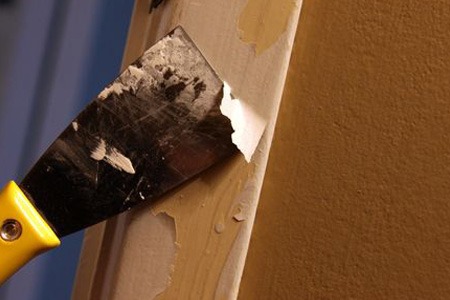How to solve basic interior painting problems
1. Why does my paint turn yellow?
Sometimes paint yellows or turns color if it is affected by different heat sources such as heating ducts, baseboard heaters, stoves and ovens. It can also be caused by lack of light or air circulation being able to get to the surface of the paint. This can occur inside of closet doors and behind pictures and wall hangings. Lower quality oil base paint has a tendency to yellow more readily than a higher quality oil base paint. High-quality acrylic paint very rarely will yellow or turn color.
2. Why does my paint wash off the wall when I try to clean it?
Again, it’s the quality of the paint. Always use high-quality paint with an eggshell or satin finish for surfaces that will be washed or scrubbed frequently. (Note: before washing a newly painted surface allow it to dry for 5 to 7 days. The paint needs time to cure all the way through the coating and become hard before washing).
3. What is the best way to wash a wall surface?
When washing a wall surface a soft sponge should be used. It should be damp, but not saturated, in order to avoid water dripping down the wall. The sponge should have a drop or two of a very mild dishwashing detergent or wall cleaner. (Avoid the use of products that have ammonia or bleach ingredients as they can change the color of the
paint). After cleaning rinse the sponge out with clear water and sponge rinse the area that was cleaned.
4. Why does my wall get shiny spots in it when I rub against it?
This is called burnishing. This is most common when using a “deep tone” paint color and the wall is rubbed by people or furniture. This is due to the amount of pigment that is needed to produce the deep color. It can also occur after trying to scrub the wall to clean it. Lower grades of paint are more subject to this burnishing effect. (A deep tone
color painted with flat wall paint is a “no touch” surface). Use high quality paint and raise the sheen to an eggshell or satin to allow better resistance to physical touch and cleaning.
5. Why does my wood trim have brown stains in different places?
Sometimes you will notice a brown stain start to appear on trim surfaces such as crown moldings, baseboards, doors and window frames. If you look closely you will probably see that these are matching spliced pieces of wood glue together. Because there are so many different pieces of wood they invariably come from different trees and different
parts of the tree. Some of the spliced pieces may bleed through the coating if it comes from a tree that has high tanning content. It is similar to seeing a knot bleed in pieces of wood. The solution is to apply oil based “Kilz” primer to seal the stain. It can then be painted over with a quality finish coat.





